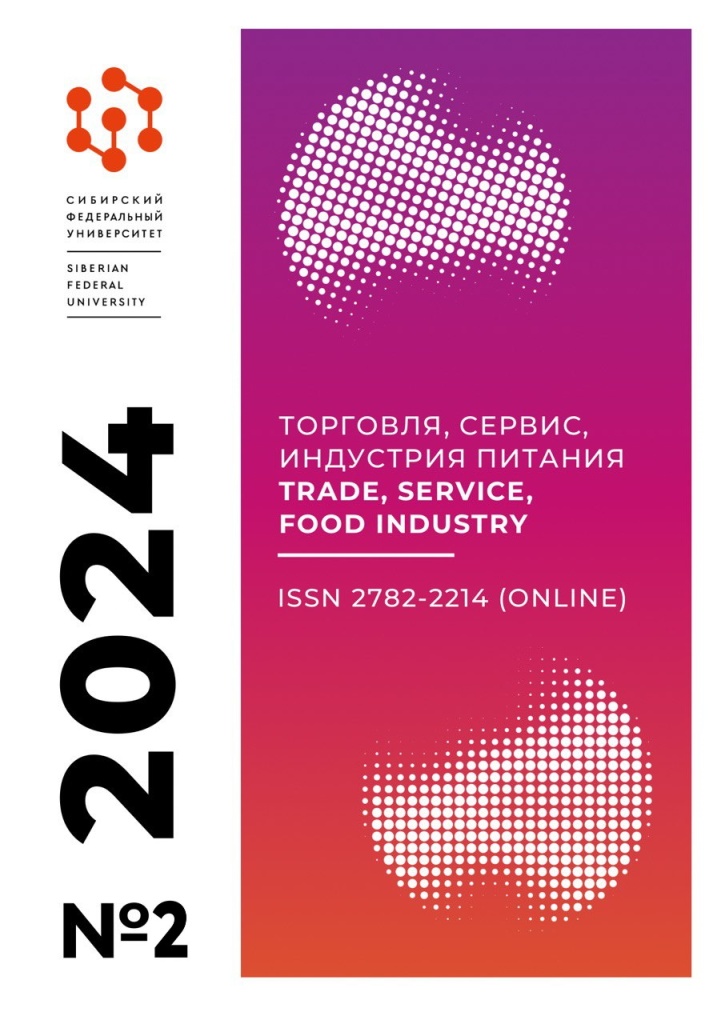Bishkek, Kyrgyzstan
Bishkek, Kyrgyzstan
The study focuses on the development trends of the energy sector of the Kyrgyz Republic, based on the analysis of data that reflects the use of hydropower capacity over the past and current years, as well as the possibilities of using clean energy in the development of a green economy. The main problems of the study cover the decrease in the potential of hydropower, including the decrease in clean energy production from a number of circumstances, which is fundamental to the country's energy sector. The work draws attention to the importance of green technologies in modern economic development and their impact on the environment. Analysis of the results emphasizes the importance of national strategic plans and their implementation at the state and industry levels to ensure sustainable development and the effectiveness of the application of the green economy concept, aimed at preserving natural and climatic conditions. The article presents valuable conclusions for researchers, organizations, and government agencies seeking to ensure the commissioning of environmentally friendly, waste-free, energy-saving technologies that reduce clean energy losses.
hydropower, losses and income of the power sector, resource consumption, green economy and technology
1. Avdzhi, A. A. (2022). The concept and essence of “green” finance. Word in Science, 3, 12–24.
2. Towards a Green Economy: Pathways to Sustainable Development and Poverty Eradication. UNEP. (2011). [Electronic source] URL: https://sustainabledevelopment.un.org /content/documents/126GER_synthesis_en.pdf (Date of access: 29.04.2024).
3. Selishcheva, T. A. (2018). “Green” economy as a model of sustainable development of the EAEU countries. Eurasian international scientific and analytical journal, 3, 6–12.
4. The concept of green economy in the Kyrgyz Republic “Kyrgyzstan is a country of green economy”. [Electronic source] URL: https://cbd.minjust.gov.kg/83126/edition/891192/ru (Date of access: 29.04.2024).
5. Green Economy Development Program in the Kyrgyz Republic for 2019–2023. [Electronic source] URL: https://cbd.minjust.gov.kg/453438/edition/1189681/ru (Date of access: 29.04.2024).
6. MoveGreen. [Electronic source] URL: http://data.movegreen.kg/indicator/5 (Date of access: 29.04.2024).
7. Water and hydropower resources of Kyrgyzstan in the context of climate change. [Electronic source] URL: https://iwp.kg/?p=961 (Date of access: 29.04.2024).
8. Arkhangelskaya. A. V., Kasymov, V. M. (2016). Hydropower resources of the Kyrgyz Republic. Mining magazine, 8, 37–41.
9. Ormushev, A. S. (2019). State and prospects of hydropower in Kyrgyzstan. News of KSTU named after. I. Razzakova, 50, 218–220.
10. Murzakulov, N. A. Abramanova, S.A., Akimov, D. (2023). Current state and prospects for the development of small hydropower in Kyrgyzstan. Research focus, 2(1), 379–381.
11. Asanbekov, A. T., Mamatkanov, D. M., Shavva, K. I., Shapar, A. K. (2000). Economic mechanism for managing transboundary water resources and the main provisions of the interstate water allocation strategy. Bishkek : International Mountain Institute, 44.
12. Zhelezko, Yu. S., Artemyev, A. V., Savchenko, O. V. (2006). Calculation, analysis and regulation of electricity losses in electrical networks. Moscow : Publishing house NC ENAS, 280.
13. Eurasian Fund for Stabilization and Development. [Electronic source] URL: https://efsd.org/projects/reabilitatsiya-toktogulskoy-ges-faza-2-kyrgyzstan/ (Date of access: 29.04.2024).
14. OJSC “National Energy Holding Company”. [Electronic source] URL: http://www.energo.gov.kg/ (Date of access: 29.04.2024).
15. Institute of Water Problems and Hydropower of the National Academy of Sciences of the Kyrgyz Republic. [Electronic source] URL: https://iwp.kg/?p=5209 (Date of access: 29.04.2024).
16. Mamatkanov, D. M., Bazhanova, L. V., Romanovsky, V. V. (2006). Water resources of Kyrgyzstan at the present stage. Bishkek : Ilim, 276.
17. Asanbekov, A. T., Mamatkanov, D. M., Shavva, K. I., Shapar, A. K. (2000). Economic mechanism for managing transboundary water resources and the main provisions of the interstate water allocation strategy. Bishkek : International Mountain Institute, 44.
18. World Bank. [Electronic source] URL: https://documents1.worldbank.org/curated/en/ 941231496767990727/pdf/115684-RUSSIAN-WP-KyrgyzRepBEURusfinal.pdf (Date of access: 29.04.2024).
19. Cabinet of Ministers of the Kyrgyz Republic. [Electronic source] URL: https://www.gov.kg/ru/post/s/23679-akylbek-zaparov-2024-zyly-energetika-tarmagyna-749-mlrd-som-bolunot (Date of access: 29.04.2024).
20. Omorov, T., Rakhimov, D. (2022). Prospects for the development of small hydroelectric power stations in Kyrgyzstan. Research Focus, 1(2), 91–95.
21. Lipina, S. A., Agapova, E. V., Lipina, A. V. (2018). The Development of the Green Economy in Russia. Opportunities and Prospects. Moscow : LENAND, 328.
22. On international experience in the development and implementation of principles, measures and mechanisms of the green economy. Analytical report. Eurasian Economic Commission. Department of Macroeconomic Policy. November 2021, 35. [Electronic source] URL: https://eec.eaeunion.org/upload/medialibrary/b34/Doklad-zelenaya-ekonomika-06.2022.pdf (Date of access: 29.04.2024).
23. Semenov, S. R., Semenov, N. S. (2022). Ways of development of information relations in the economy of the Kyrgyz Republic. M. Ryskulbekov atyndagy Kyrgyz economics universityin kabarlary, 2(55), 115–117. EDN JTVBJV.
24. Paton-Romero, J. D., Baldassarre, M. T., Rodriguez, M., Piattini, M. (2018). Green IT governance and management based on ISO/IEC 154. Computer Standards and Interfaces, 60, 26–36.
25. Samtsova, D. (2021). Trends and promising directions of the green economy in the EAEU countries. Bulletin of the Kyrgyz National University named after Zhusup Balasagyn, 2(106), 154–161.








